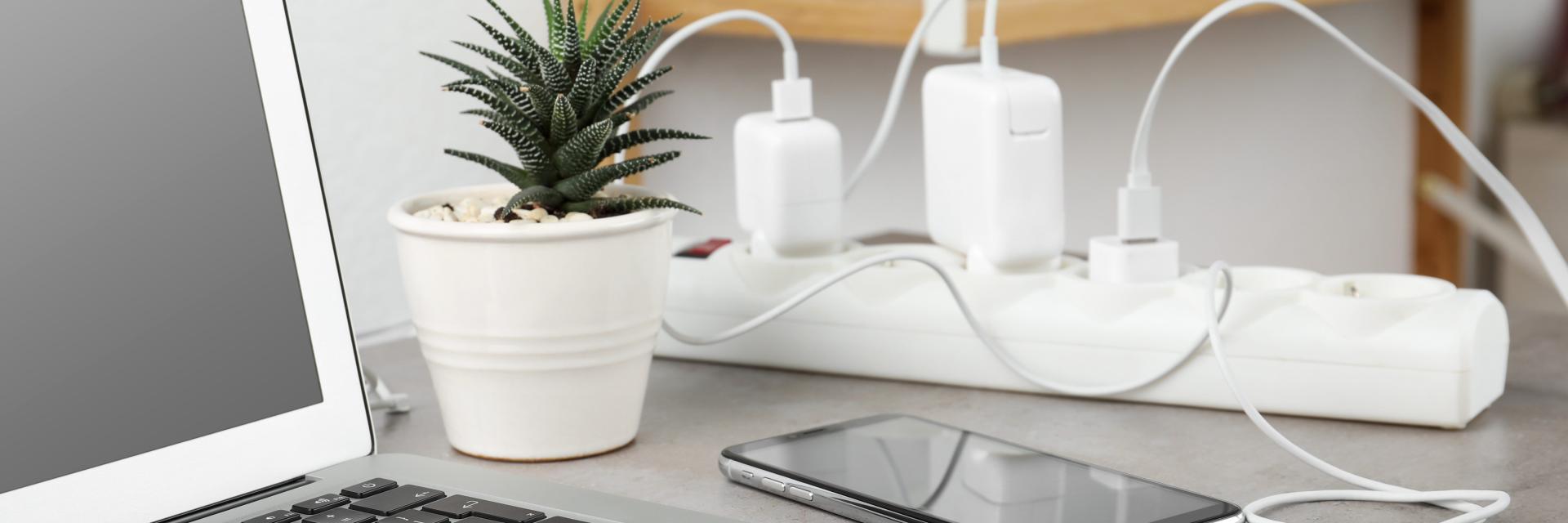
How to hide wires and electronic devices for a clean aesthetic
Although wireless technology is becoming more and more widespread, many devices in the home still require wired connections that require them to be placed in very specific locations in a room. Exposed wires and electronics produce ‘visual noise’ that negatively affects the harmony of a room. Hiding wires is not only more aesthetically pleasing, but also much more functional.
Tips for hiding wires at home
Increasing dependence on new technologies has meant that technological devices are taking up more and more space in the home. Here are some tips for continuing to enjoy all their features without compromising the aesthetics of the home.
- Laying gutters
If it is not possible to conceal the connections of an electronic device (e.g. TV or loudspeaker) and drilling holes in the wall to route the cables is too complicated, self-adhesive gutters may be the solution. They adhere firmly to smooth surfaces and allow several cables to be placed inside them. They are available in different colours to make them more inconspicuous on the wall and, although they are still a visible element, they look much neater and more elegant.
- Use magazine racks
The digitalisation of reading has led to new uses for magazine racks. Where books, magazines or newspapers used to be placed, tablets and laptops can now be placed. Leather, fabric or rattan magazine racks are a good alternative for keeping these devices close at hand without adding visual noise to the living room.
- Use power strip boxes
As the name suggests, these elongated boxes are used to conceal power strips of different sizes and are a great solution for making the connections of electronic devices a little more discreet. They have openings at the ends for the power cables of the devices to be connected. The more aesthetically pleasing models have a tray at the top where small devices (such as mobile phones) can be placed while charging.
- Putting up router racks
Router racks are similar to power strip boxes, except that they are mounted on the wall. They are so called because they are commonly used to conceal routers, racks and other such devices. Essentially, they are shelves with front doors, no back panel and openings in the sides. Many include holes in the top to accommodate device antennae and a shelf on which small decorative objects such as flowerpots, candles, or figurines can be placed.
- Placing charging stations
Many of the mobile devices used at home (laptops, tablets, mobile phones, etc.) can be charged at any power socket. Instead of distributing them throughout the house, you can choose a space specially designed for this purpose. The charging stations are not very large and allow you to keep all your devices under control and tidy in a discreet place while charging, instead of having them spread out in different sockets around the house. Induction charging models are even more aesthetically pleasing (they do not use wires), although it is also possible to hide the entire device inside a drawer, cupboard or other dedicated piece of furniture.




